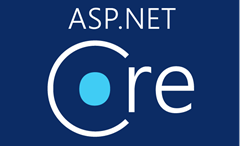by DotNetNerd
23. June 2023 07:41

For a while I have actually not had to do much configuration of app registrations, managed identities and so on, simply because I often join teams who have other people doing that part. So it has been fun and at time challenging to get back into it, as I have had to lately. So to help others, and maybe a future me I just want to write down a few notes, that will help me remember a few key details.
First of all when we are talking about a setup with a frontend application and backend api app registration, the app roles and claim mapping should be done in the backend api, with roles being defined as part of the app registration, and the mapping from e.g. groups being done in enterprise application. The roles and claims will then become available in the access token, once a user logs in using the clientid for the frontend application, that uses the backend API.
In most we cases we will then also need to have services that should be able to call our API. Authenticating using managed identity makes this quite simple, with the caviat being that roles can only be assigned using a script.
To run e.g. a Functions app that should be allowed access you need to configure a managed identity and add the role to it using a powershell script like below. User assigned managed identity can be used if you wish to use it for multiple services, however things like access to key vault using keyvault references require a system managed identity - so you will likely need to either use a system managed identity and configure it for each service, or have both kinds of managed identity configured.
$objectIdForManagedIdentity = "insert object (principal) id from managed identity"
$enterpriseApplicationObjectId = "insert enterprise applications object id"
$roleIdGuid = "insert role id"
$uri = "https://graph.microsoft.com/v1.0/servicePrincipals/$objectIdForManagedIdentity/appRoleAssignments"
$body = @{
principalId = $objectIdForManagedIdentity
resourceId = $enterpriseApplicationObjectId
appRoleId = $roleIdGuid
} | ConvertTo-Json
az rest --method POST --url $uri --body $body
After that when fetching a token using DefaultAzureCredentials the .default scope should be used and the ManagedIdentityClientId should be set to ensure it uses the user assigned identity.
by DotNetNerd
13. February 2023 09:12
A nice and simple way to expose static files is through Azure blob storage. If you are already using API Management you might want to have requests to through there, in order to ensure you can move it to somewhere else in the future. It requires a few steps to get it to work though.
First of all Managed Identities should be enabled in API management and Access Control (IAM) should be configured for the container to allow API management to access the file. In API management the endpoint is added with authentication-managed-identity policy to allow authentication is passes through. After that a number of headers should be removed and the x-ms-version, which is required to do AD authentication, should be set when forwarding the request from API Management to the blob storage endpoint.
In my case I also wanted to avoid the .json extension in the endpoint, so the configuration ended up looking something like this.
<policies>
<inbound>
<set-header name="Ocp-Apim-Subscription-Key" exists-action="delete" />
<set-header name="Sec-Fetch-Site" exists-action="delete" />
<set-header name="Sec-Fetch-Mode" exists-action="delete" />
<set-header name="Sec-Fetch-Dest" exists-action="delete" />
<set-header name="Accept" exists-action="delete" />
<set-header name="Accept-Encoding" exists-action="delete" />
<set-header name="Referer" exists-action="delete" />
<set-header name="X-Forwarded-For" exists-action="delete" />
<set-header name="x-ms-version" exists-action="override">
<value>@{string version = "2017-11-09"; return version;}</value>
</set-header>
<rewrite-uri template="/settings.json" copy-unmatched-params="true" />
<authentication-managed-identity resource="https://storage.azure.com/" />
</inbound>
<backend>
<base />
</backend>
<outbound>
<base />
</outbound>
<on-error>
<base />
</on-error>
</policies>
by DotNetNerd
5. February 2020 09:04
I have recently been looking at copying entire collections of data on Azure, in a way that should run as either Azure Functions or Webjobs. This is useful for backups, and simply moving data between environments. I didn't come across too many good samples of how to do this, so I expect it can be a useful topic for others who need to do the same thing.
More...
by dotnetnerd
9. October 2019 08:25
Every once in a while you run into a great online tool or resource, and makes life as a developer easier. Moving between companies as I do, I often see that people are using services that provide lots of value, but are not necessarily well known by most. So in this post I will start by sharing a few of the services that I have come accross lately.More...
by DotNetNerd
2. April 2019 17:02
Recently I had the need to setup easy auth using Azure B2C to authenticate users across a frontend Azure Web App and an Azure Functions backend. Allthough it sounds like a regular scenario, the documentation I found could have been better. I don’t have the time to write the complete docs, but this blogpost will outline the steps, so I can remember it for next time, and hopefully to enable you to do the same kind of setup. Let’s get cracking. More...
by dotnetnerd
9. November 2018 11:25
Cloud native is one of those words that make some people shake their heads and call BS. In some contexts I am one of those people. It does however also have its place, because building solutions that are cloud centric does come with a number of benefits and enables solutions that were very hardif not impossible pre-cloud.
Sure, you can script the setup of a server from scratch, but it requires quite a bit of work, it takes time to execute and you still end up with an environment that requires updates and patching as soon as the script is a week old. In a cloud setup good practices, in the form of DevOps mainly using the CLI makes this very obtainable. Actually the current environment I am working with combines an ARM template and a few lines of script so we can spin up an entire environment in about 15 minutes. The only manual step is setting up the domain and SSL cert, but even that could be scripted if I wanted to.
More...
by dotnetnerd
11. October 2018 12:07
Finally, someone has written a UI testing tool for the web and done it right! For at least 5 years I have been envious of the UI testing tools that were written for native application development. I have tried various tools for UI testing websites, but they all relied on selenium, which sucks harder than my vacuum cleaner. No matter how much lipstick you put on a pig, it is still a pig, so the brittle nature of selenium would bleed through, and require you to do updates to drivers as well as handle very low level things like timing between a click and the actual page being re-rendered. So working with those tools has been slow and painful.
More...
by DotNetNerd
22. May 2018 16:14
As my last video recommendation from Build this time around I will recommend taking a look at Jeff Burtoft talking about PWA’s on Windows. To me it is one of those topics where I mostly end up picking parts that are suited for what I am building, without going into everything under the umbrella. In that way, this talk suits me very well, because Jeff dives into the fairly few essentials they believe are required for a web app to be considered progressive.
More...
by DotNetNerd
15. May 2018 16:48
 Continuing through the most important talks at Build I have come to the .NET overview and roadmap talk with the two Scotts, Hanselman and Hunter. They had a good combination of things I heard was coming, but also completely new stuff. It was well known that they are working on SignalR for .NET core, and one of the first demoes was running a SignalR app via Azure, which was really cool, and makes using and scaling SignalR a lot easier.
Continuing through the most important talks at Build I have come to the .NET overview and roadmap talk with the two Scotts, Hanselman and Hunter. They had a good combination of things I heard was coming, but also completely new stuff. It was well known that they are working on SignalR for .NET core, and one of the first demoes was running a SignalR app via Azure, which was really cool, and makes using and scaling SignalR a lot easier.
More...
by DotNetNerd
14. May 2018 17:02
Along the same line as the TypeScript talk, Mads Thorgersen and Dustin Campbell did a great talk about the future of C#, opening with some statistics that show how loved and widely used the language really is. Even though I am very much in love with F#, I am also quite happy doing my work in C#, as I have been for 14 years, so it is nice to see innovation in the language continue, and especially that they keep on drawing inspiration from F#.
More...